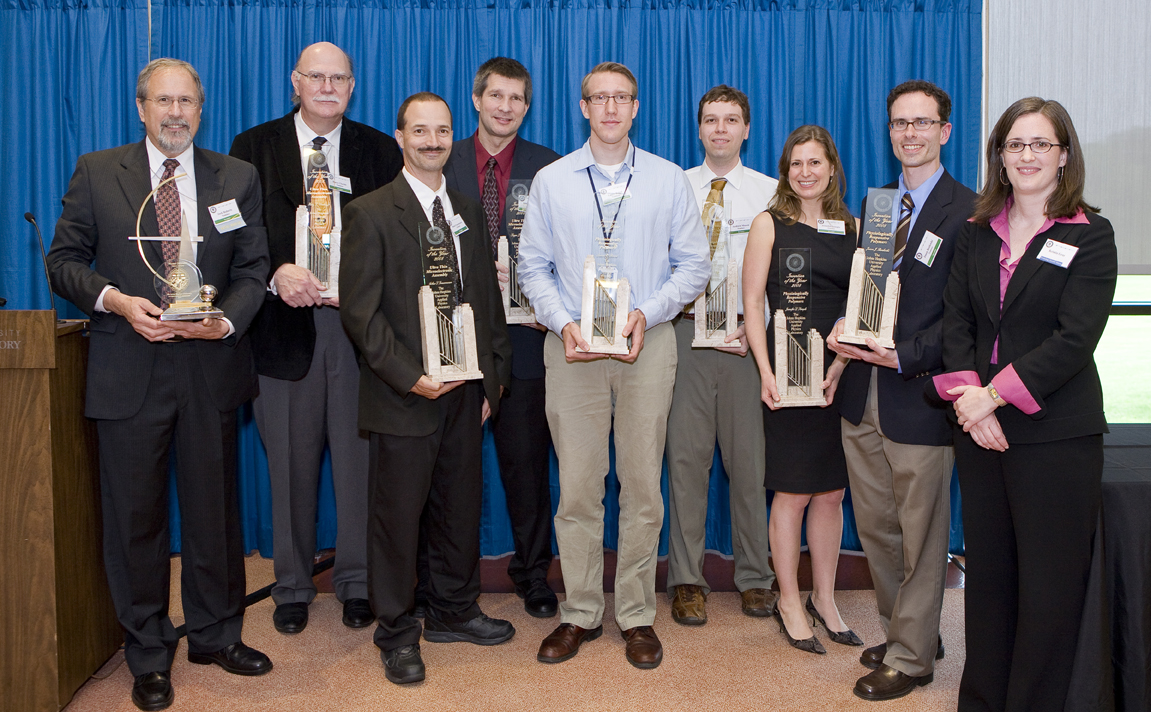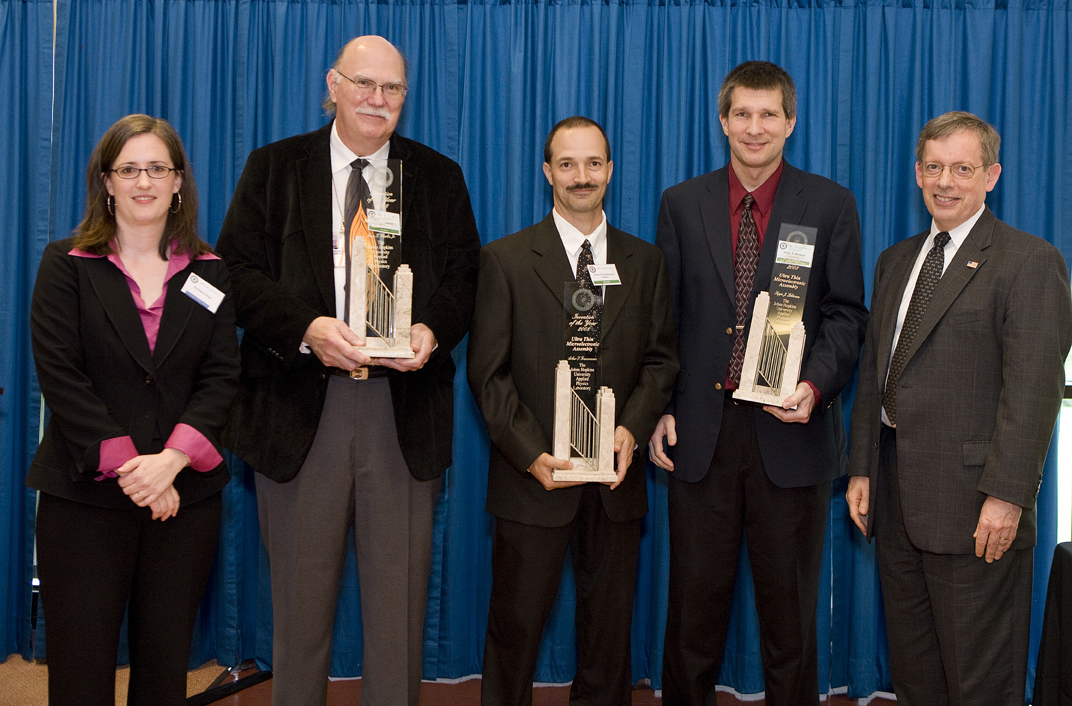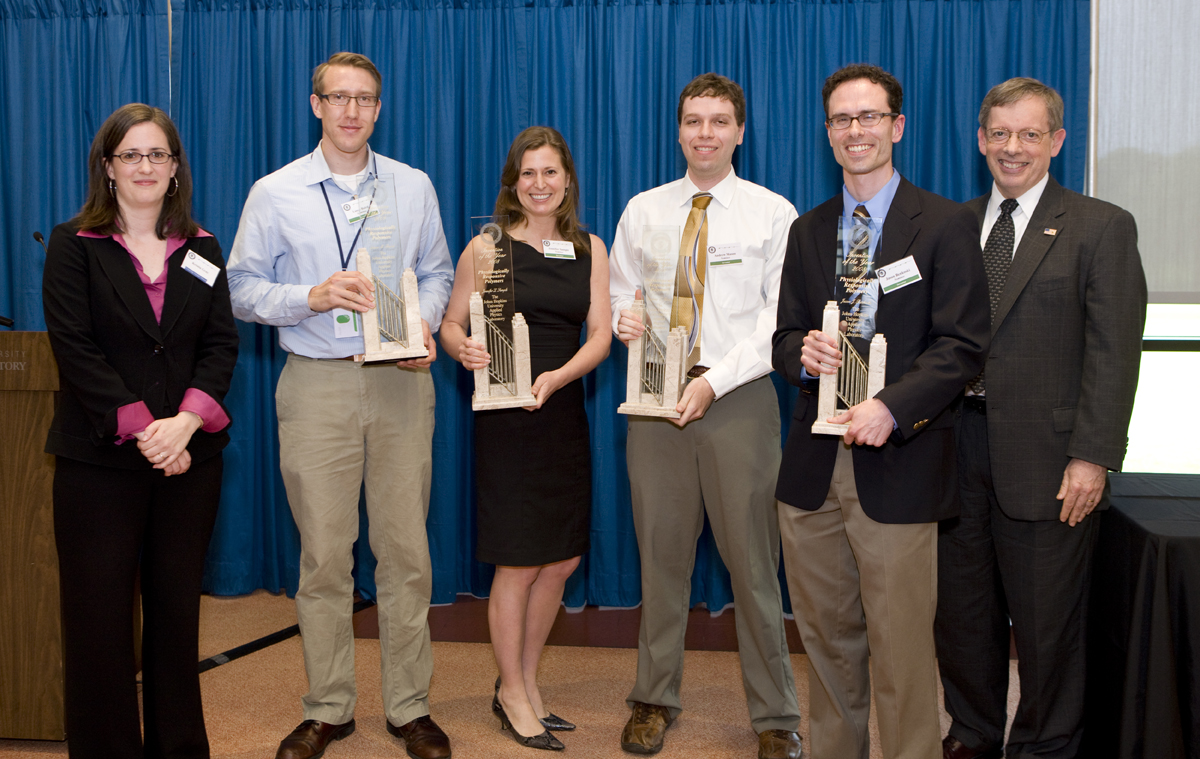Press Release
Johns Hopkins Applied Physics Lab Names Best Inventions
Medical, Micromechanical Breakthroughs Share Top Honor in 10th Annual Competition
Wed, 05/13/2009 - 09:05
A “smart” polymer that automatically releases medicine into the bloodstream and a super-thin flexible microchip share the honor as The Johns Hopkins University Applied Physics Laboratory’s top invention for 2008.
The winners were selected from the 129 inventions reported by 193 APL staff members last calendar year. An independent panel of 30 representatives from industry, the high-tech sector and patent law selected the top inventions based on their benefit to society, improvement over existing technology, and commercial potential. APL Director Rich Roca and Technology Transfer Director Kristin Gray presented plaques and cash awards to the inventors, listed with their inventions below, during the Lab’s 10th annual Invention of the Year ceremony May 7 on the APL campus in Laurel, Md.
- Lance Baird, Jason Benkoski, Andrew Mason and Jennifer Sample have conceived Physiologically Responsive Polymers, self-regulated polymers that would sense a physiological change (such as an allergic response) and release an appropriate therapeutic (such as an antihistamine) in proportion to the physiological condition. Acting simultaneously as a sensor, dispenser and medicine, the polymers would remove the need for expensive implant devices and, in some cases, mitigate the need for continuous medical supervision.
- Harry Charles, Shaun Francomacaro, Allen Keeney and John Lehtonen have developed a method — known as Ultrathin, Flexible Multichip Modules — for making rugged, lightweight and compact microelectronic assemblies that are about half the thickness of a human hair. The assemblies can be inexpensively mass produced, use little power, and can be mounted or laminated to curved surfaces — leading to potential uses in smart cards, active circuit appliqués, implantable biomedical devices and even fabrics. The process not only drastically reduces substrate thickness but also increases wiring density, allowing several conductor layers to be stacked in extremely small spaces.


